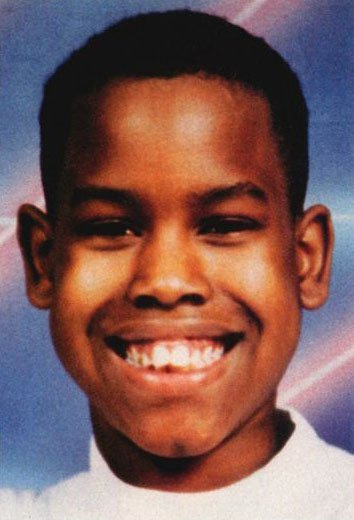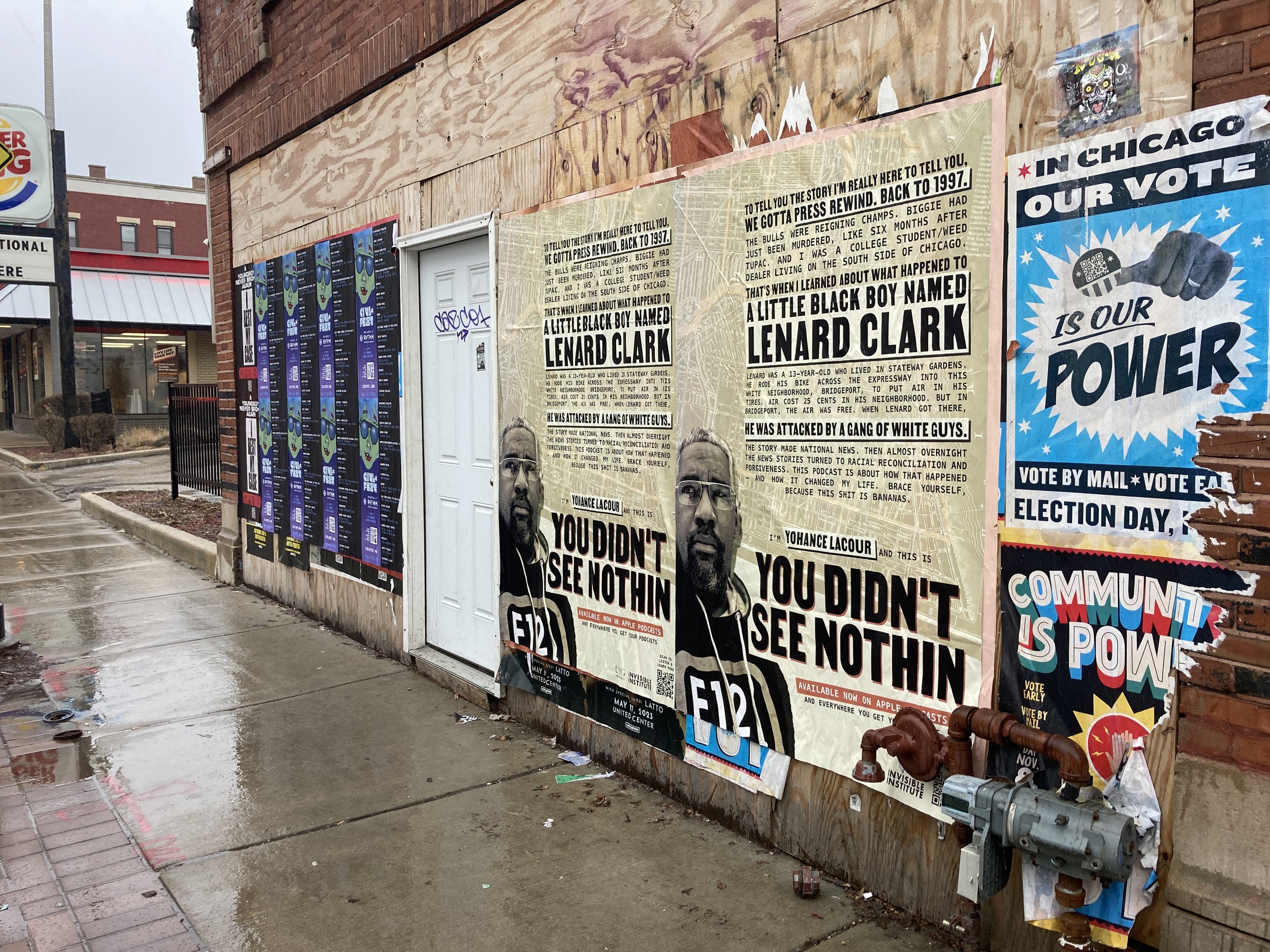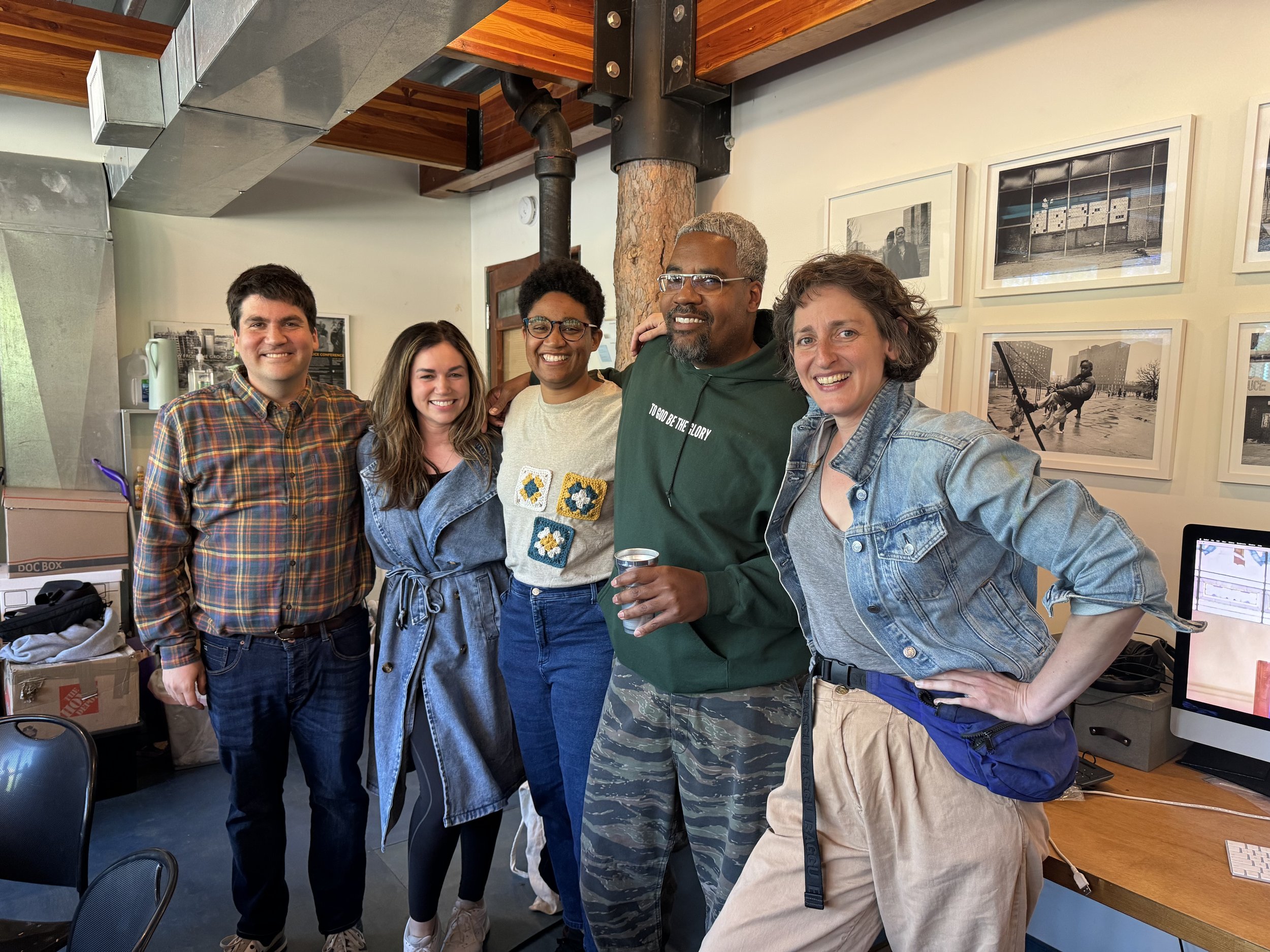Yohance Lacour revisits a 1997 hate crime on the South Side of Chicago that introduced him to the world of investigative journalism, examining how its ripple effects have shaped Lacour’s own life over the past quarter-century.
You Didn’t See Nothin is a powerful new limited series podcast from USG Audio and the Invisible Institute
LISTEN TO THE PODCAST
LIST OF CHARACTERS
School Photo of Lenard Clark
Part of the You Didn’t See Nothin audio team celebrating their 2024 Pulitzer Prize win for Audio Reporting. From left: Bill Healy, Alison Flowers, Erisa Apantaku, Yohance Lacour, and Sarah Geis
Yohance Lacour - Host of the podcast
Lenard Clark - 13 year-old boy beaten in Bridgeport by a group of older white teenagers
Clevan Nicholson - Lenard’s friend who was attacked with him but got away
Wanda McMurray (Coco) - Lenard’s mom
Frank Caruso, Jr. (Frankie) - The main attacker convicted of beating Lenard Clark
Frank Caruso, Sr. & Sherri Caruso - Frankie’s parents
Rev. B. Herbert Martin - Black spiritual leader who supported racial healing and lenience for Frankie Caruso, Jr.
Bamani Obadele - Community activist
Zakiyyah Muhammad - Community activist
Ron Carter - Yohance’s editor, and the publisher of the South Street Journal
Michael Cutler - Friend of Frankie Caruso, Jr. who was killed before he could testify at trial
Michael Kwidzinski - One of Lenard’s attackers
Victor Jasas - One of Lenard’s attackers
Tommy Simpson - Friend of Frankie Caruso, Jr. who spoke to police but then refused to testify at trial
Richard DeSantis - Friend of Frankie Caruso, Jr. who spoke to police initially but then disappeared before he was forced to testify at trial
Judge Dan Locallo - Judge in the trial of Frankie Caruso, Jr.
Mayor Richard J. Daley - Mayor of Chicago, 1955-1976
Mayor Richard M. Daley - Mayor of Chicago, 1989-2011
Pat Hill - Chicago Police Officer who helped Yohance in his investigation
Rev. Jesse Jackson - Influential Black spiritual leader
Harold Washington - First Black Mayor of Chicago, 1983-1987
Hot Rod - Friend of Yohance and “Big Homie” to Lenard
Perri Small - WVON producer/host
Bruno Roti, Sr. - Frankie Caruso, Jr.’s great-great grandfather who was an associate of Al Capone
Prince Asiel Ben Israel - Black spiritual leader who supported racial healing and lenience for Frankie Caruso, Jr.
Wallace Gator Bradley - Black community leader who supported lenience for Frankie Caruso, Jr.
Dr. Marcia Chatelain - Pulitzer Prize-winning historian who was in high school in Chicago when Lenard was beaten
ABOUT THE LEARNING GUIDE
This curriculum was developed by the Invisible Institute Audio Team, in collaboration with Heather Renée Ingram and other educators. This curriculum is designed to be flexible to a classroom’s needs. It can be used as a comprehensive curriculum or using each lesson as a standalone.
You Didn’t See Nothin was produced by Yohance Lacour, Bill Healy, Dana Brozost-Kelleher, Erisa Apantaku, and Sarah Geis, and executive produced by Alison Flowers, Jamie Kalven, and Josh Bloch.
NOTE: This podcast contains curse words, references to violence against a child, discussion of a hate crime, and use of the N-word.
ESSENTIAL QUESTIONS AND LEARNING OBJECTIVES
Forgiveness & Reconciliation
What does forgiveness look like?
What actions should be taken if forgiveness is to be found?
Chicago Politics & History of Segregation and Racial Redlining
Why is Chicago a segregated city?
How has Chicago’s racism/segregation changed in the 25 years since Lenard Clark was beaten? How has it remained the same?
Journalism Ethics and Narrative Justice
Why did most of the news outlets quickly push to a narrative of reconciliation?When you read an article or see the news today, how do you know if it’s telling the whole story?
Learning Objectives
Students will explore historic and contemporary examples of segregation and racial discrimination through structural systems.
Students will analyze, via various media and traditional texts, the impact of structural racism on intercommunal relationships.
Students will compose explanatory essays that synthesize a myriad of texts and media.
Students will develop the empathy, self-reflection, and critical thinking skills needed to engage in meaningful dialogue.
Students will develop a critical awareness of media and journalistic biases and analyze the way this bias shapes common narratives.






